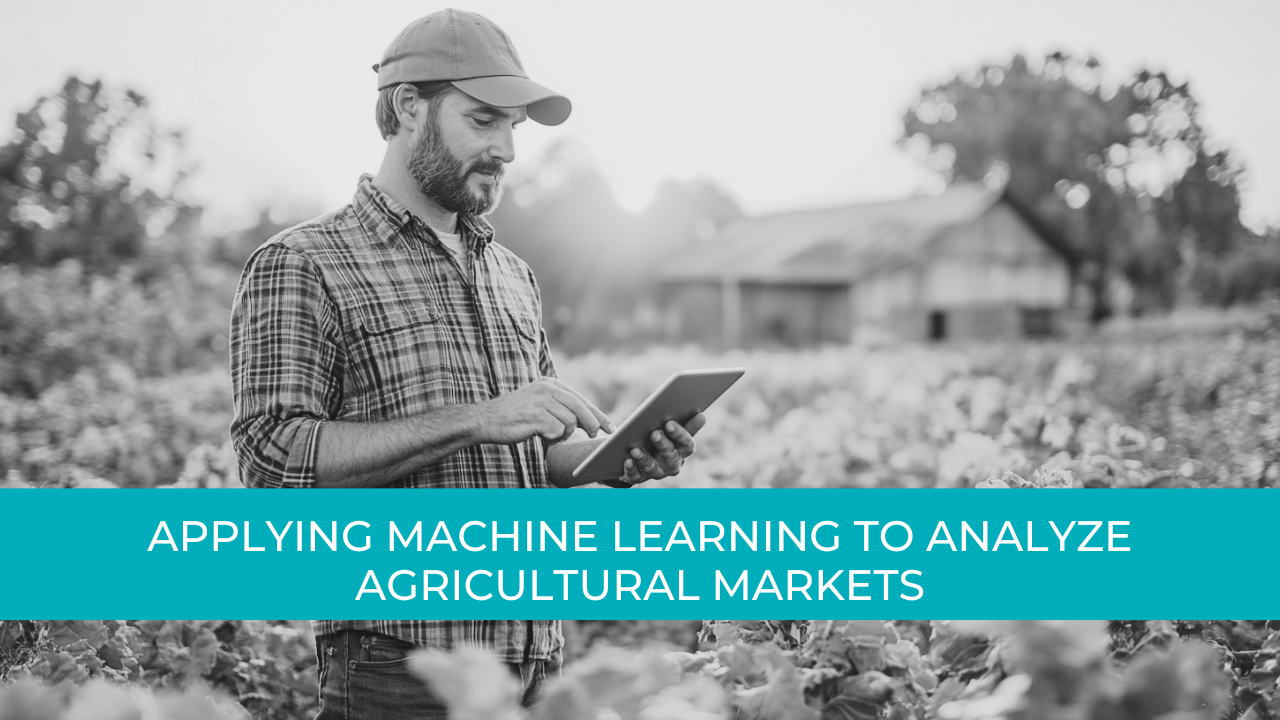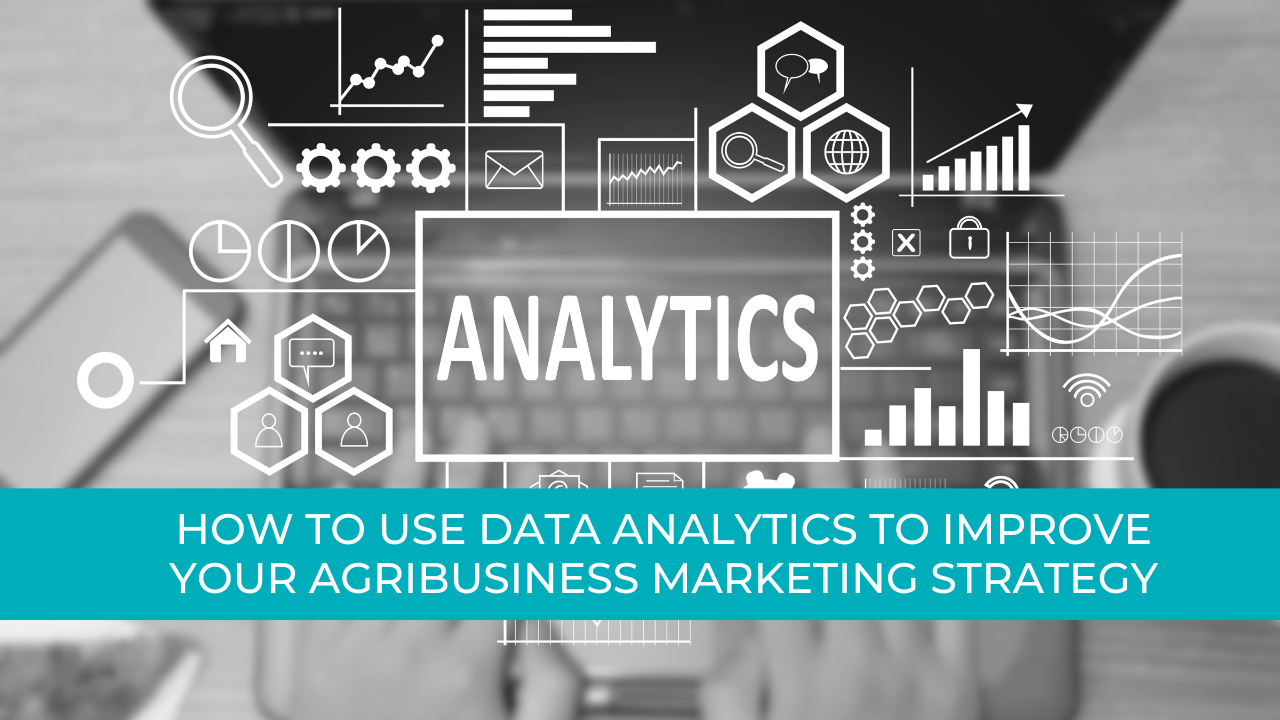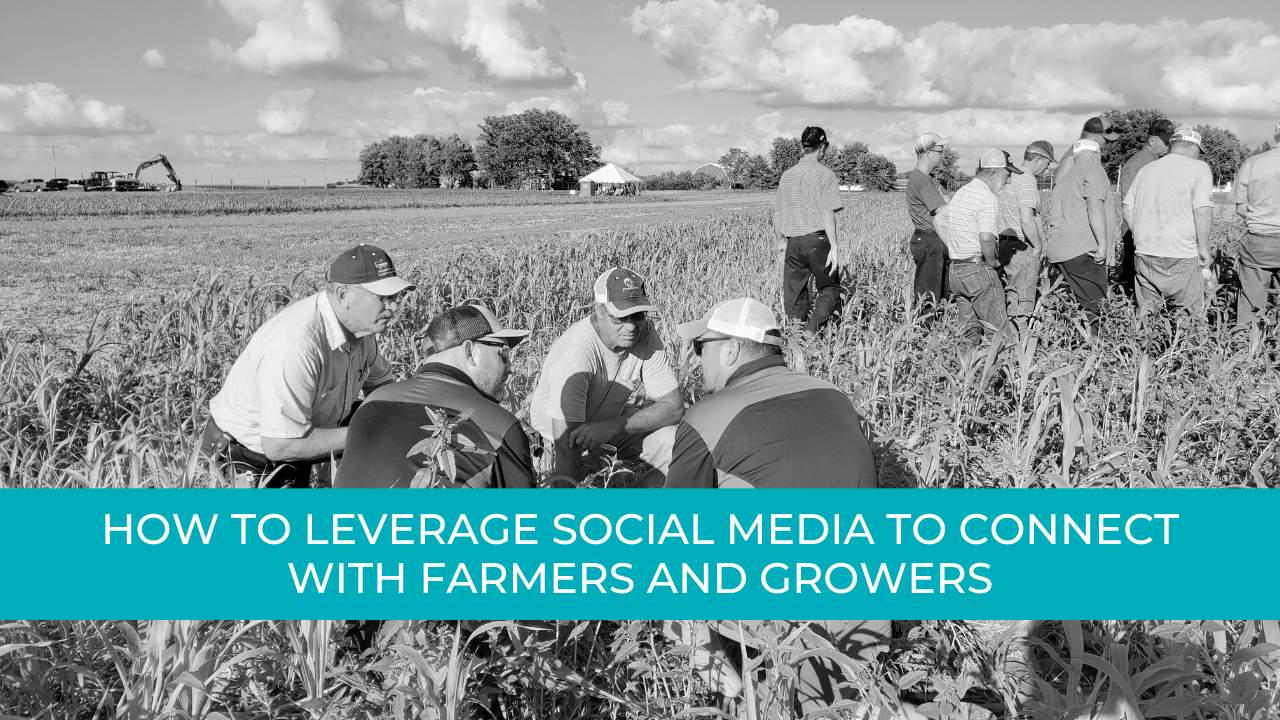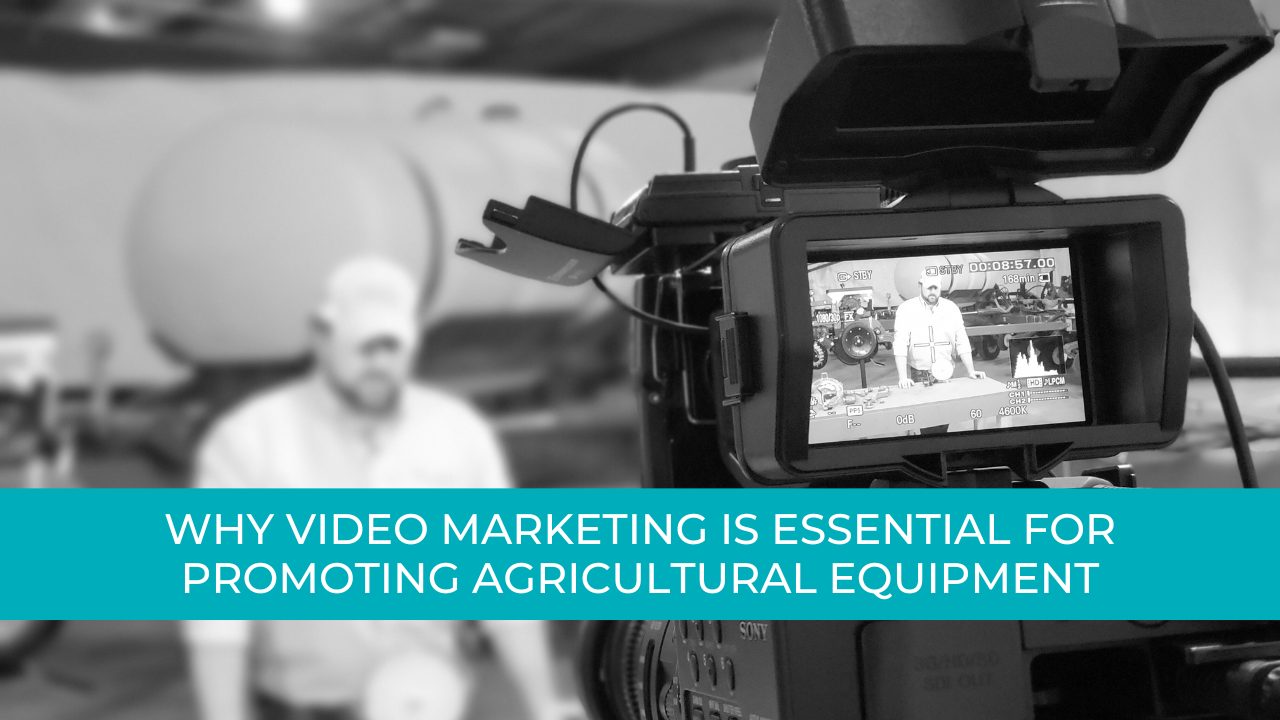Agtivation Blog
What's New In The Digital Ag World
Applying Machine Learning to Analyze Agricultural Markets
Imagine standing in a vast field, where every decision you make influences the crops you harvest. As agricultural markets evolve, you can't afford to rely solely on intuition. Machine learning offers powerful tools to analyze market trends and consumer behaviors, transforming how you approach farming. But how do you harness this technology to stay ahead in a competitive landscape? Let's explore the potential it holds for your agricultural operations.

Key Takeaways
- Machine learning enhances data accuracy by analyzing large agricultural datasets for more reliable market trend predictions.
- Predictive analytics through machine learning helps forecast crop prices and market demands based on historical data and weather patterns.
- Consumer behavior analysis using machine learning identifies purchasing trends, enabling tailored marketing strategies for agricultural products.
- Algorithms optimize resource allocation and risk management, improving operational efficiency in agricultural markets.
- Continuous model refinement and experimentation with various algorithms ensure accurate analysis and adaptation to changing market conditions.
Understanding Machine Learning in Agriculture
Machine learning is like having a smart assistant that helps farmers make better decisions. It enables data-driven farming, where you can analyze large amounts of data to uncover valuable insights. With predictive analytics, you can forecast crop yields, monitor soil health, and optimize irrigation. This technology allows you to identify trends and patterns that might not be obvious at first glance. By using these insights, you can make informed choices about planting, harvesting, and resource allocation. Imagine knowing exactly when to plant your crops for maximum yield or how to allocate your resources more effectively. Embracing machine learning means you're not just reacting to changes but proactively improving your farming practices.
Key Benefits of Machine Learning for Market Analysis
As you explore the world of data-driven farming, it's exciting to see how machine learning can also enhance your understanding of agricultural markets. Here are some key benefits:
- Improved Data Accuracy: Machine learning algorithms sift through vast data sets, ensuring you get reliable insights.
- Enhanced Predictive Analytics: It helps you forecast market trends, so you can make informed decisions.
- Efficient Resource Allocation: By analyzing data, you can optimize your operations and reduce waste.
- Risk Management: Machine learning identifies potential market risks, helping you to mitigate losses.
How Machine Learning Can Predict Crop Prices
Machine learning can help you understand the factors that influence crop prices, making it easier to predict future trends. By analyzing past data, you can spot patterns that might affect your profits. This approach not only gives you a clearer picture of the market but also empowers you to make smarter decisions as a farmer.
Understanding Machine Learning Basics
When you think about predicting crop prices, it might surprise you to learn how machine learning can help. Here are four key ways it works:
- Data Collection: Gathering historical crop prices, weather patterns, and market trends.
- Data Preprocessing: Cleaning and organizing this data to guarantee accuracy.
- Supervised Learning: Using labeled data to train algorithms that can predict future prices based on patterns.
- Continuous Improvement: As new data comes in, the system learns and refines its predictions.
Predicting Price Trends
Predicting crop prices can feel like guesswork, but with machine learning, you can make more informed decisions. By utilizing algorithms that analyze historical data, you can enhance your price forecasting abilities. These models consider various factors, like weather patterns, supply levels, and market volatility, to identify trends and shifts in the market.
When you apply machine learning techniques, you're not just reacting to changes; you're anticipating them. This proactive approach allows you to adjust your strategies accordingly, whether you're a buyer or seller. Embracing these advanced tools can lead to smarter decisions, helping you navigate the unpredictable nature of agricultural markets and ultimately improving your bottom line.
Benefits for Farmers
Understanding how crop prices fluctuate can be tricky, but there are many benefits to using machine learning for farmers. Here's how technology integration can help you:
- Improved Forecasting: Machine learning analyzes vast amounts of data to predict market trends and prices.
- Better Decision-Making: With accurate predictions, you can make informed choices about planting and selling.
- Increased Profitability: By timing your sales right, you can maximize your profits.
- Resource Optimization: Data analysis allows you to use resources more efficiently, reducing waste.
Analyzing Consumer Trends With Machine Learning
As you explore ways to enhance your agricultural business, consider how machine learning can help you analyze consumer trends effectively. By examining data on consumer behavior, you can identify patterns that reveal what your customers want. Machine learning algorithms can sift through vast amounts of information, making trend prediction easier and more accurate. This insight allows you to tailor your products and marketing strategies to meet emerging demands. Plus, understanding consumer preferences can help you stay ahead of competitors. By leveraging machine learning, you can not only fine-tune your offerings but also build stronger relationships with your customers. Embrace technology to gain valuable insights, making your agricultural business more responsive to market changes.
Enhancing Decision Making Through Data Insights
By understanding market trends, you can make smarter decisions for your agricultural business. With insights from data, you'll improve crop management and respond effectively to changing demands. This approach not only helps you optimize resources but also positions you for greater success in the market.
Understanding Market Trends
Market trends can feel like a moving target, but keeping an eye on them is essential for making informed decisions in agriculture. By leveraging market analysis and effective data collection, you can gain valuable insights to guide your strategy. Here are four key reasons to understand market trends:
- Identify Opportunities: Recognize emerging markets or shifts in consumer demand.
- Minimize Risks: Anticipate market fluctuations and adjust your plans accordingly.
- Enhance Pricing Strategies: Set competitive prices based on market conditions.
- Improve Product Development: Tailor your offerings to meet current market needs.
Improving Crop Management
Improving crop management can make a big difference in your farming success. By using data insights, you can enhance your decision-making process and boost productivity. Implementing effective crop rotation strategies helps maintain soil health and maximize yield optimization. This practice not only reduces pests and diseases but also improves nutrient availability, leading to better harvests.
Leveraging machine learning tools allows you to analyze weather patterns, soil conditions, and crop performance, giving you a clearer view of the best planting times and varieties. By making informed choices based on data, you can adapt your practices to changing conditions, ensuring your crops thrive. Embracing these insights will ultimately support your goals and lead to a more successful farming operation.
Real-World Examples of Machine Learning in Agriculture
Machine learning is making waves in agriculture, transforming how farmers and producers approach their work. By harnessing data, you can improve crop forecasting and yield prediction, making your operations more efficient. Here are some real-world examples of machine learning applications in agriculture:
- Precision Agriculture: Farmers use sensors and algorithms to monitor soil health and optimize irrigation.
- Disease Detection: Machine learning models analyze images of crops to identify diseases early.
- Supply Chain Optimization: AI predicts demand, helping farmers manage inventory and reduce waste.
- Automated Machinery: Drones and robots equipped with machine learning navigate fields for planting and harvesting.
These innovations are reshaping the agricultural landscape, ensuring better productivity and sustainability for all.
Steps to Implement Machine Learning in Your Business
As you explore the exciting possibilities of machine learning in agriculture, you might wonder how to bring these innovations into your own business. Start by focusing on data collection. Gather relevant data from your operations, like crop yields, weather patterns, and market prices. This information will provide the foundation for your machine learning models. Next, immerse yourself in algorithm selection. Choose algorithms that suit your specific needs, whether it's predicting crop performance or analyzing market trends. Don't hesitate to experiment with different algorithms to see which one yields the best results. Finally, continuously refine your models based on new data and insights. By following these steps, you'll be well on your way to harnessing the power of machine learning in your agricultural business.
Frequently Asked Questions
How Does Machine Learning Differ From Traditional Data Analysis Methods?
Machine learning uses advanced data processing techniques and predictive analytics to uncover patterns and insights from large datasets. Unlike traditional methods, it adapts and improves as it learns, making it more efficient for complex analyses.
What Types of Data Are Needed for Machine Learning in Agriculture?
Imagine revealing the secrets of your farm! For effective machine learning, you'll need data on crop yield, weather patterns, soil health, and pest occurrences. These insights help you make better decisions for your agricultural business.
Can Small Farms Benefit From Machine Learning Technologies?
Small farms can optimize their operations using machine learning for yield prediction. By analyzing data, you can make informed decisions, improve efficiency, and ultimately boost productivity, making your farm more successful and sustainable.
How Long Does It Take to See Results From Machine Learning?
Think of planting seeds; you won't see blooms overnight. Result timelines vary, often depending on data preparation. With careful setup, you can start noticing changes in a few weeks to months. Patience pays off!
Is Machine Learning Expensive to Implement for Agricultural Businesses?
Implementing machine learning can involve various costs, but it's essential to evaluate cost analysis against potential investment returns. You'll find that thoughtful deployment often leads to long-term savings and improved efficiency in your business.
Final Thoughts
So, while you might still be relying on your gut feeling to decide when to plant or sell, machine learning is quietly revolutionizing the agricultural market behind the scenes. It's almost like letting a crystal ball do the heavy lifting while you sip your coffee. Embracing this technology doesn't just make sense; it's a game changer. Who knew that algorithms could be your new best farming buddies, helping you make smarter decisions and keeping those pesky uncertainties at bay?














